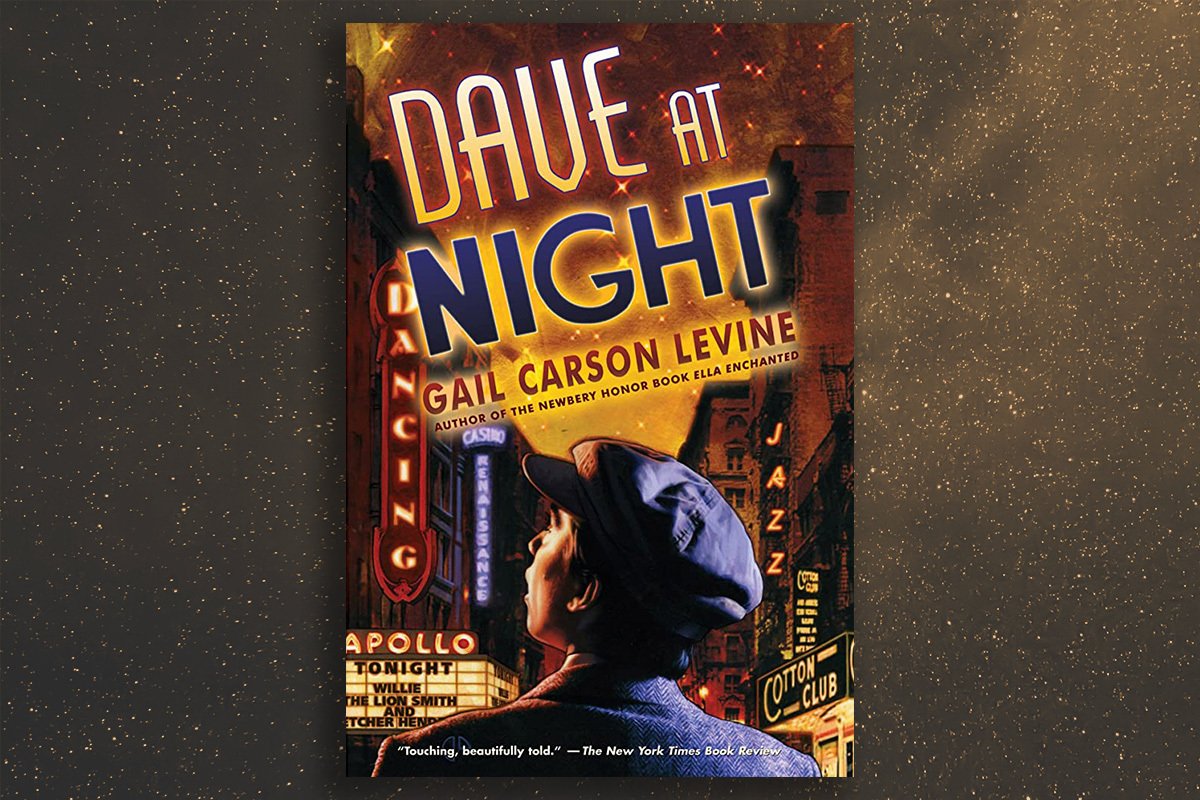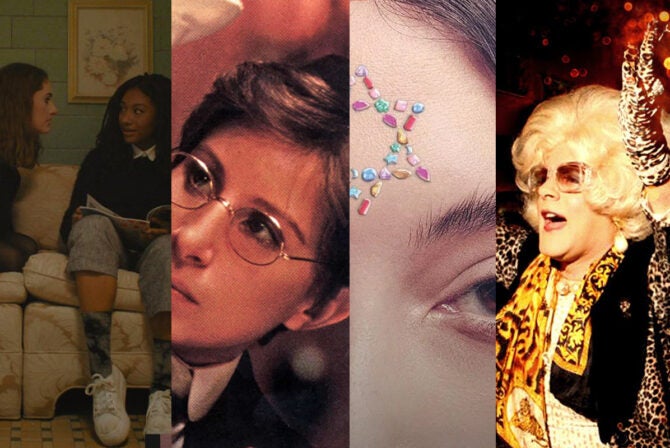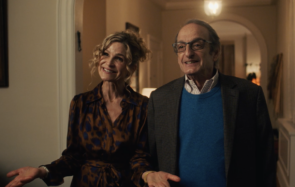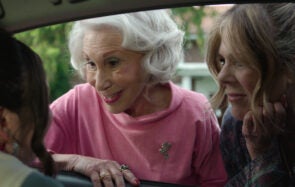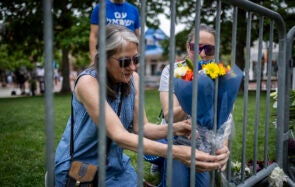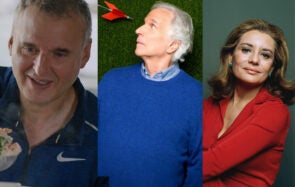I was 8 years old when I was gifted (I forget why, or from whom) two books by a woman named Gail Carson Levine. The first was her wildly popular fairytale retelling, “Ella Enchanted,” which was loosely adapted into a movie starring Anne Hathaway in 2004. The second, which caused my third-grade self to raise an eyebrow because it was not only about a boy, but had no fairies or magic in it at all, was “Dave at Night.”
I probably would have let “Dave” sit on my bookshelf untouched, but that seemed rude to the gift-giver, and besides, I was keeping a reading log for school, so I always needed to be reading something. I gave “Dave” a chance, and I was only a few pages in before I was glad I did.
“Dave at Night” tells the story of Dave Caros, who lives in New York City in the 1920s. Early in the book, his father is killed in a workplace accident, after which his older brother goes to live with relatives in Chicago, and Dave’s stepmother surrenders him to a city orphanage, the Hebrew Home for Boys. Once inside the orphanage, Dave makes friends, meets foes, and by night, escapes the orphanage to wander the streets of Jazz Age New York, eventually encountering the heart of the Harlem Renaissance. Dave, himself a talented artist like his late father, is enchanted — but has to get back to the orphanage and all it entails by morning after every night out.
The book is loosely based on the childhood of the author’s father, who spent much of his childhood in New York’s Hebrew Orphan Asylum (although sadly never met Langston Hughes crashing a party in his pajamas). As a child, it was, to put it bluntly, one of the most Jewish books I’d ever read. Not only is Dave Jewish, so are all his friends, or “buddies” at the orphanage, his surrogate grandfather/partner in crime on the streets of Harlem, Solly the Gonif, and even the story’s villains, from the sadistic orphanage director to Dave’s hard-hearted stepmother.
Some of their Judaism, and relatedly, but not the same, their Jewishness, was familiar to me, even as a child — like when Dave recognizes someone singing “Rock of Ages” around Hanukkah, or craves the smoked fish and sour pickles from his old neighborhood’s appetizing store. I had learned “Rock of Ages” in Hebrew school, and I loved a bit of smoked salmon myself — although I already preferred half-sours to sour pickles, hard as they were to find in Bethesda, Maryland.
Other parts were new. Dave is Sephardic, and reading about his adventures provided my introduction to dishes like “Sephardic eggs” (haminados) and the existence of the Ladino language.
Carson Levine is from a Sephardic background herself — her father was born with the last name Carasso, but changed it, as she explains in the notes of the novel, to Carson as a young man to feel like “a real American.” My own great-grandparents were immigrants who came to New York — they also took on new names in their new country.
Not everyone in this book is Jewish, though. Given Dave’s excursions to speakeasies and rent parties (where the door charge for the party helped the hosts pay rent), it would be a crying shame for the book to ignore the thriving Black American culture of Jazz Age New York. Happily, Carson Levine delivers. Dave gets cameo glances of not only Langston Hughes, but W.E.B. Du Bois (who Solly calls “a genius”) and a few other Harlem Renaissance notables.
Moreover, Dave’s love interest is a wealthy girl his age whose mother is heavily inspired by legendary Harlem society hostess and patroness of the arts A’Lelia Walker, daughter of self-made millionaire Madame C. J. Walker. You’ll find no spoilers here, but let’s just say, making such wealthy and powerful friends doesn’t hurt a young orphan whose friends are being mistreated by the self-important bully in charge of their home.
Gail Carson Levine is still a wildly popular writer of children’s fantasy and fairytales, and for good reason — “Ella Enchanted,” her Princess Tales series of novellas and her other fantasy works are wonderful reads. But “Dave at Night” feels different. Maybe I’m biased, knowing it’s based on her father’s childhood, but it feels personal.
And for me, it was personal, in a way I wasn’t expecting. Like any elementary school student who had just read something they loved, I had to tell everyone I knew about it. When I got to my mother, and told her about the rent parties and the musicians and the Charleston dancing, she lit up. “This book was about a Jewish boy, right?” she asked.
She smiled. “You know, your great-grandparents used to go to Harlem to the nightclubs to listen to jazz music in the ‘20s; they loved it. Just like Dave. Lots of Jewish people did.”
I already knew that I liked the sound of the Harlem Renaissance, but knowing I had a family connection to it — and to Dave, in a way — was even better. I had read books with Jewish characters before — “Hershel and the Hanukkah Goblins” and the Passover hit any Marylander would love, “Matzah Ball” — but Dave was the first Jewish protagonist who’d felt like a friend.
Despite its relative obscurity, and despite having been published over 20 years ago now, “Dave at Night” is still in print. If you have a kid in elementary school and want to spark a fun conversation about Jewish history, the Jazz Age, and how friends stick together, or even if you just appreciate great children’s lit, consider picking it up. And maybe afterwards, take a leaf out of Dave and Solly’s book, and try reciting Langston Hughes’ “Weary Blues,” nu?
